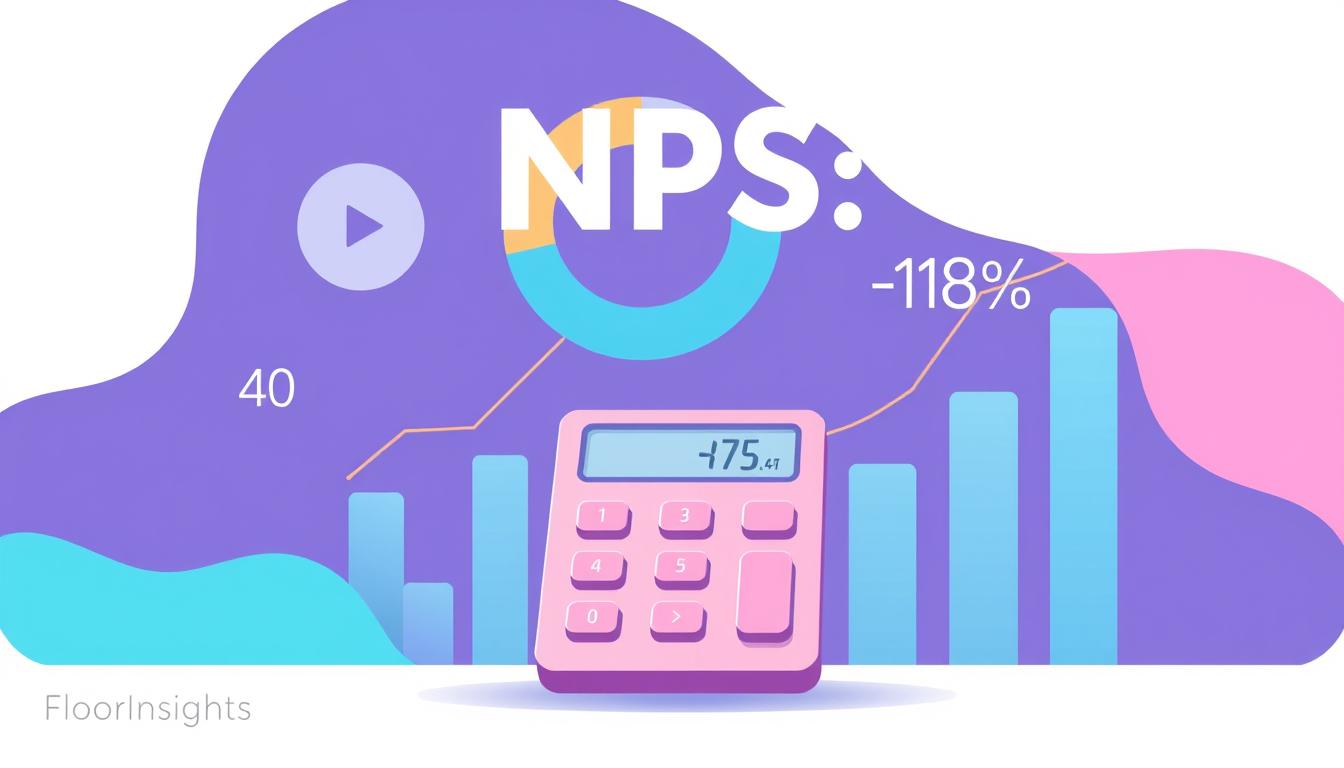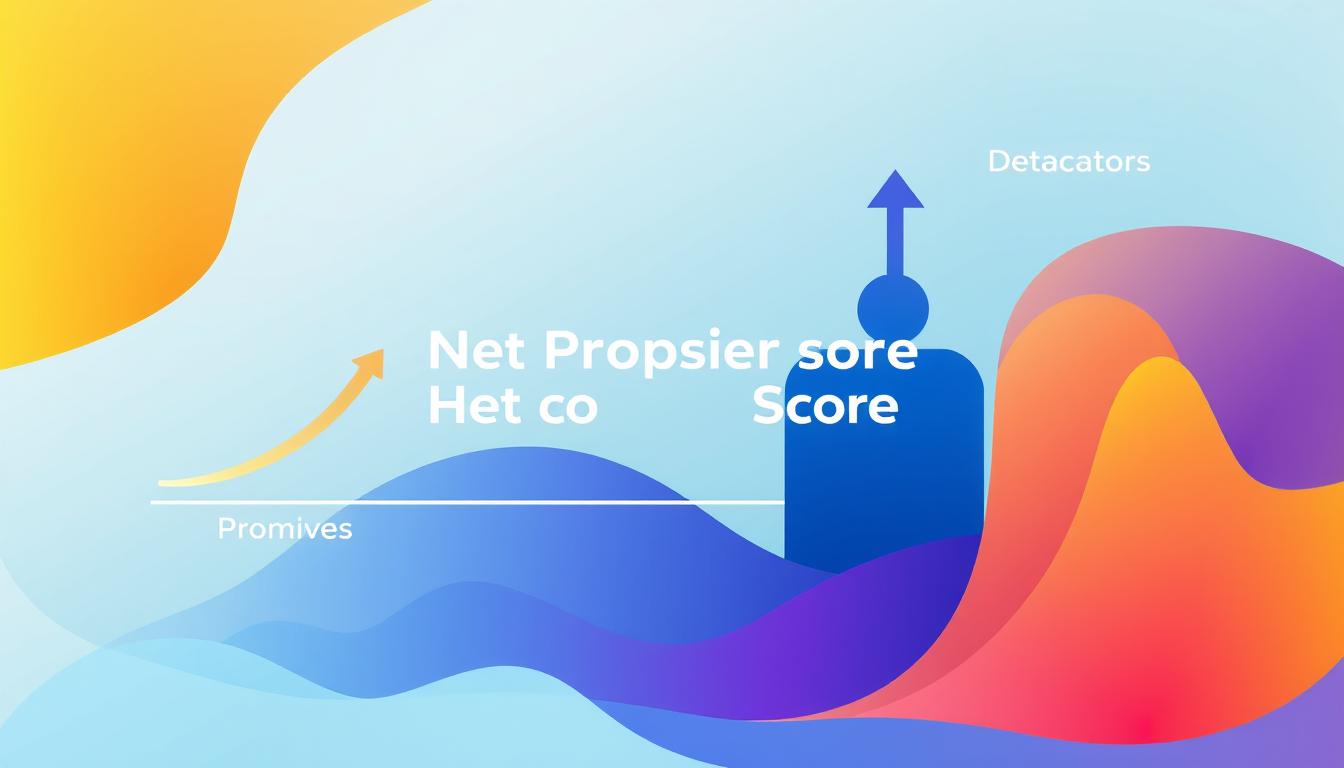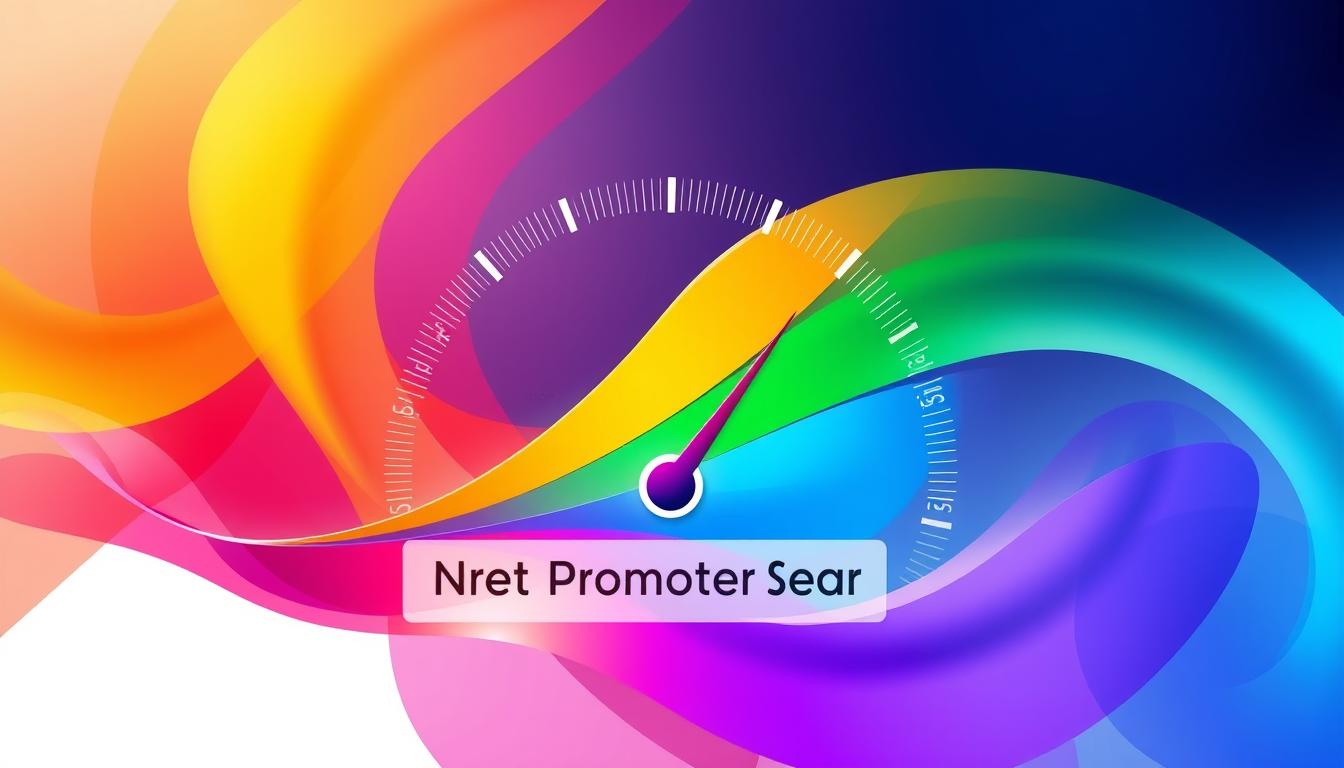In today’s rapidly evolving digital landscape, we face the necessity to adapt to ongoing changes to meet our customers’ expectations. The Net Promoter Score (NPS) serves as a critical tool that enables us to gauge customer loyalty and satisfaction. By leveraging insights gained from NPS, we can align our strategies with customer feedback, ultimately driving growth and enhancing the user experience. This article will explore how NPS facilitates digital transformation, helping us remain responsive in an era characterized by continuous digital change.
Key Takeaways
- NPS is vital for measuring customer loyalty and satisfaction.
- Digital transformation requires adapting business strategies based on customer feedback.
- Implementing an effective NPS survey platform enhances user experience.
- Understanding NPS helps align our goals with customer expectations.
- Continuous improvement initiatives are supported by insights from NPS.
The Importance of Digital Transformation
Digital transformation stands as a pivotal element in today’s rapidly changing business landscape. By understanding digital change, we can appreciate how it reshapes consumer expectations and alters market dynamics. Recognizing these shifts allows organizations to adapt strategically.
Understanding Digital Change
Digital change encompasses the evolving nature of technology and its integration into everyday business practices. This evolution forces us to rethink traditional models and embrace new strategies. Awareness of trends, such as consumer behavior influenced by digital platforms, empowers businesses to position themselves effectively. Organizations that grasp the nuances of digital change can tailor their services to meet emerging demands.
The Role of Technology in Business
Technology in business acts as the backbone for growth and innovation. From operational efficiency to enhanced customer experiences, technology is integral to effective operations. We can leverage data analytics, artificial intelligence, and cloud computing to streamline processes and foster connectivity. A well-defined digital transformation strategy enables businesses to harness technology effectively, creating a competitive advantage and ensuring relevance in the marketplace.
| Aspects of Digital Transformation | Key Benefits |
|---|---|
| Customer Engagement | Enhanced interaction through personalized experiences. |
| Operational Efficiency | Reduced costs and optimized processes. |
| Data Utilization | Informed decision-making based on analytical insights. |
| Market Responsiveness | Quick adaptation to changing consumer preferences. |
| Innovation | Fostering a culture of continuous improvement. |
What is Net Promoter Score?
The Net Promoter Score (NPS) serves as a critical indicator of customer loyalty. Understanding the definition of NPS helps us evaluate the level of enthusiasm that our customers have toward our brand, products, or services. By categorizing our customers into three groups—Promoters, Passives, and Detractors—we gain insights into their willingness to recommend our offerings to others.
Defining the Net Promoter Score
The concept behind the definition of NPS lies in measuring customer sentiment. Promoters are those who score us highly and are likely to recommend us, while Detractors may share negative feedback that can harm our reputation. Passives, sitting in the middle, neither promote nor detract, which indicates potential areas for improvement. This classification aids in focusing our efforts on enhancing customer satisfaction and loyalty.
The Calculation of NPS
Understanding the Net Promoter Score calculation is essential for effectively gauging our customer base. The calculation involves subtracting the percentage of Detractors from the percentage of Promoters. The resulting score can range from -100 to 100, providing a clear picture of our customer loyalty. Accurate NPS measurement allows us to track changes over time, identifying trends that inform our business strategies and foster a customer-centric approach.
How NPS Drives Business Growth
Understanding how Net Promoter Score (NPS) contributes to business growth is essential for organizations aiming to enhance customer loyalty and achieve significant financial results. We can identify vital components that reflect the connection between customer satisfaction and overall business success. Let’s explore how NPS plays a crucial role in fostering customer loyalty and driving revenue growth.
Identifying Customer Loyalty
NPS serves as a powerful tool to gauge customer loyalty. By categorizing customers into Promoters, Passives, and Detractors, we can identify those who advocate for our brand. Focusing on Promoters allows us to foster strong relationships with loyal customers, turning them into brand ambassadors. This strategic approach not only enhances customer retention but also drives referrals that significantly contribute to our growth trajectory.
Linking NPS to Revenue Growth
Research establishes a strong correlation between NPS and revenue growth. Organizations that achieve a higher NPS often experience greater customer retention, which leads to repeat purchases and positive word-of-mouth. By analyzing our NPS data alongside financial performance metrics, we can gain valuable insights into the impact of customer loyalty on our business success. Connecting these dots enables us to align our offerings with customer expectations, ultimately driving NPS revenue growth.
Implementing a Net Promoter Score Survey
Effective NPS survey implementation is vital for garnering valuable insights into customer loyalty. Our choice of an NPS survey platform directly influences the quality of data we collect. We must select a platform that not only offers user-friendly features but also robust analytics for a comprehensive understanding of feedback trends.
Choosing a NPS Survey Platform
When evaluating an NPS survey platform, we should consider several key factors:
- User Experience: An intuitive interface encourages higher response rates and facilitates smoother navigation.
- Integration Capabilities: Seamless connection with existing management systems improves our workflow.
- Data Analysis Tools: Advanced analytics provide deeper insights into customer sentiments.
Choosing a platform aligned with our organization’s needs accelerates the NPS survey implementation process, making it a strategic investment.
Best Practices for Gathering Feedback
Implementing feedback collection best practices enhances the reliability of our survey data. Consider the following methods:
- Timing: Conducting surveys shortly after customer interactions maximizes relevance and immediacy.
- Conciseness: Keeping surveys brief improves completion rates, ensuring we capture essential sentiments.
- Anonymity: Assuring respondents of their privacy fosters honesty, leading to more authentic feedback.
Establishing a consistent survey cadence helps track shifts in customer sentiment, allowing us to adapt strategies based on real-time insights.
Interpreting Net Promoter Score Data
Understanding NPS metrics is vital for leveraging the full potential of our customer insights. By breaking down the NPS score, we can identify the distribution of Promoters, Passives, and Detractors. This classification plays a crucial role in pinpointing areas requiring improvement within our organization.
Understanding NPS Metrics
Analyzing NPS data begins with recognizing the individual contributions of Promoters, Passives, and Detractors. Each group offers unique insights. Promoters are likely our most loyal customers, advocating for our brand, while Passives may require encouragement to transition into Promoters. Detractors highlight critical areas needing attention.
Analyzing Customer Feedback for Insights
Incorporating a customer feedback analysis alongside NPS scores enriches our understanding of customer sentiments. Qualitative data extracted from customer comments sheds light on specific pain points or areas of satisfaction. By synthesizing this qualitative feedback with quantitative NPS metrics, we can devise targeted strategies aimed at improving customer satisfaction and fostering loyalty across various touchpoints.

How NPS Supports Digital Change Initiatives
In our journey through digital change initiatives, the Net Promoter Score (NPS) emerges as a vital tool for guiding strategic adaptations. Leveraging customer feedback adaptation allows us to align our business strategies more closely with the expectations and needs of our clients. This alignment is crucial for ensuring sustained relevance in a competitive marketplace.
Adapting Strategies Based on Customer Feedback
Our ability to adapt strategies hinges on the feedback we receive from our customers. By systematically collecting and analyzing NPS data, we can identify trends and shifts in customer sentiment. This insight empowers us to modify our offerings effectively, ensuring we remain responsive to customer desires. Improved customer engagement often results from these adaptations, fostering a stronger loyalty base.
The Importance of Continuous Improvement
Continuous improvement is fundamental in the digital landscape. Regular NPS assessments let us stay in tune with evolving customer expectations. By cultivating a consistent feedback loop, we can proactively enhance our services. Embracing continuous improvement not only leads to better products and services but also heightens overall customer satisfaction.
Integrating NPS in Digital Transformation Strategies
Integrating NPS into our digital transformation strategies represents a vital step towards achieving alignment with our core business objectives. By measuring and interpreting NPS, we can gauge the effectiveness of our digital initiatives and ensure that customer expectations are consistently being met.
Aligning NPS with Business Objectives
When we integrate NPS with our business objectives, it enables us to create a clear benchmark for success. This relationship allows us to:
- Evaluate the impact of digital changes on customer satisfaction.
- Identify areas needing improvement based on customer feedback.
- Align resources and priority projects according to NPS feedback.
Cross-Department Collaboration through NPS
Fostering cross-department collaboration through NPS can transform how we address customer concerns. NPS serves as a common language that encourages teams to share insights, ultimately driving innovation across our organization. Key benefits include:
- Breaking down silos to improve teamwork.
- Enhancing communication about customer needs and sentiments.
- Coordinating efforts to implement solutions quickly.
Successful integration of NPS into our digital transformation strategies ensures that we remain responsive and proactive in meeting customer needs.
| Strategy Component | NPS Alignment Benefits |
|---|---|
| Customer Feedback Loops | Continuous updates on customer satisfaction trends |
| Data Sharing Across Departments | Fostered innovation and unified action plans |
| Proactive Problem Solving | Faster resolution of customer pain points |
Net Promoter Score Measurement Tools
To effectively implement the Net Promoter Score (NPS) in our organization, the right measurement tools play a vital role. Understanding how to assess various options allows us to select the most suitable software for our requirements. By focusing on essential aspects like usability, analytical functions, and compatibility with existing systems, we can streamline our approach to tracking customer loyalty.
Evaluating Net Promoter Score Software
When we engage in evaluating NPS software, several criteria should guide our decision-making:
- Ease of Use: The software should have a user-friendly interface for both administrators and customers.
- Analytics Capabilities: Robust analytics will enable us to track trends and extract valuable insights from responses.
- Integration: Compatibility with other tools and platforms we use fosters seamless data flow.
- Customization: Flexibility in configuring surveys to align with our branding and goals enhances user engagement.
- Support and Training: A responsive support team and training resources can help us maximize the software’s potential.
Choosing the Right Tools for Our Organization
While choosing NPS tools, we should prioritize specific features that cater to our organizational needs:
- Scalability: The tool must accommodate our growth, handling an increasing volume of surveys and data.
- Real-time Reporting: Immediate access to feedback helps us respond quickly to customer sentiment.
- Security: Ensuring data protection is paramount, so we need tools that comply with industry standards.
Investing in the right NPS measurement tools empowers us to effectively track customer loyalty and make informed business decisions based on accurate data. The thoughtful selection process will ultimately lead us toward achieving greater customer satisfaction and retention.
Case Studies of NPS in Action
Exploring notable NPS case studies reveals how various organizations have embraced this tool during their digital transformations. Through these examples, we gain insights into effective strategies and potential challenges that arise during implementation.
Successful Digital Transformations Utilizing NPS
Several organizations have successfully integrated NPS into their operations, yielding impressive outcomes:
- Adobe shifted focus to customer-centered product development by utilizing NPS to gauge user satisfaction. This shift resulted in significant enhancements in user engagement and retention.
- Amazon leveraged NPS to continuously adapt its services based on direct customer feedback. This constant iteration enabled the company to dominate the e-commerce landscape globally.
- Netflix utilized NPS not only for customer satisfaction measurement but also for content development insights. This approach led to a more tailored viewing experience for subscribers.
Lessons Learned from NPS Implementation
Analyzing the lessons from NPS reveals critical takeaways for organizations:
- Consistent feedback solicitation plays a vital role in understanding customer needs.
- Actionable follow-ups transform feedback into real improvements, enhancing customer experience.
- Integrating customer insights into decision-making processes ensures alignment with market demands.
Conclusion
In summary, the importance of NPS cannot be overstated when it comes to navigating today’s rapidly changing digital landscape. As we have explored throughout this article, Net Promoter Score serves as a powerful instrument that guides us in understanding customer sentiments and enhancing customer experience. By embracing this tool, we position ourselves to respond effectively to the digital transformation impact that permeates all aspects of our operations.
Moreover, interpreting NPS data enables us to glean actionable insights, which can drive business growth and foster long-term loyalty. We must recognize that adopting a customer-centric approach through NPS is not just a strategic advantage but a necessity for sustaining success in an increasingly competitive environment. By actively engaging with our customers’ feedback, we cultivate a culture of continuous improvement that benefits not only our organization but also the needs and expectations of those we serve.
Ultimately, as we move forward, let’s continue to leverage the NPS framework to strengthen our digital transformation initiatives and enhance our overall performance. By doing so, we ensure that we remain relevant and resilient in a rapidly evolving marketplace.
FAQ
What is the Net Promoter Score and how is it calculated?
The Net Promoter Score (NPS) is a widely recognized metric used to assess customer loyalty and satisfaction. It classifies customers into three groups: Promoters, Passives, and Detractors based on their likelihood to recommend your company’s products or services. The calculation involves subtracting the percentage of Detractors from the percentage of Promoters, yielding a score that can range from -100 to 100. This score helps us understand customer sentiment and informs our service strategies.
Why is digital transformation important for organizations?
Digital transformation is crucial as it represents a fundamental shift in how we leverage technology, processes, and culture to meet evolving customer needs. Understanding digital change is essential for recognizing the market dynamics and consumer preferences that technology influences. Organizations that proactively engage in digital transformation are better positioned to thrive in competitive markets, ensuring relevance and responsiveness to customer demands.
How does the NPS support business growth?
NPS is a powerful indicator of customer loyalty that allows us to identify Promoters who can become brand advocates. It is strongly correlated with revenue growth; organizations with a higher NPS generally experience increased customer retention, repeat purchases, and referrals. By linking NPS insights to our financial performance, we can better assess how customer loyalty impacts overall business success.
What are best practices for implementing an NPS survey?
Implementing an NPS survey effectively involves careful planning. Choosing the right NPS survey platform is essential, ensuring it includes an intuitive interface and robust data analysis capabilities. Best practices for gathering feedback include timing the survey correctly, keeping the survey concise, and maintaining respondent anonymity to promote honest answers. Regularly scheduled surveys allow us to track changes in customer sentiment over time for continual improvement.
How do we analyze NPS data to gain insights?
Analyzing NPS data involves breaking down the results into meaningful metrics. We must understand the distribution of Promoters, Passives, and Detractors to identify areas needing improvement. Additionally, examining qualitative feedback alongside NPS scores provides deeper insights into customer perceptions and challenges. This synthesis of data allows us to develop targeted strategies to enhance overall customer satisfaction and loyalty.
In what ways can NPS drive digital change initiatives?
NPS is integral to guiding our digital change initiatives. By utilizing insights garnered from NPS surveys, we can adapt our strategies to align more closely with customer expectations. Continuous improvement is vital in this process; regularly assessing NPS helps us remain attuned to the evolving needs of our customers. This proactive feedback loop fosters an enhanced customer experience and service offerings.
How can we integrate NPS into our digital transformation strategies?
Integrating NPS into our digital transformation strategies requires alignment with our core business objectives. By using NPS as a benchmark for evaluating our digital initiatives, we can ensure they meet customer expectations. Promoting cross-department collaboration through NPS enables teams to share valuable insights and address customer concerns in a unified manner, driving innovation and creating a more customer-centric culture throughout our organization.
What tools can we use for effective NPS measurement?
Selecting the right NPS measurement tools is crucial for effective implementation. When evaluating various NPS software options, we need to consider features like user-friendliness, analytics capabilities, and compatibility with existing systems. Choosing appropriate NPS tools that match our organizational needs allows us to streamline data collection and analysis, significantly enhancing our ability to track customer loyalty and support informed decision-making.
Can you provide examples of successful NPS implementations?
Many organizations have successfully implemented NPS, achieving significant milestones in their digital transformations. By examining case studies, we can gain insights into best practices—such as the importance of consistent feedback solicitation and actionable follow-up. These lessons highlight how integrating customer insights into our decision-making processes can create a roadmap for effectively utilizing NPS to drive customer satisfaction and loyalty.






